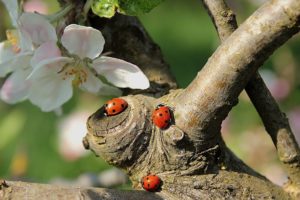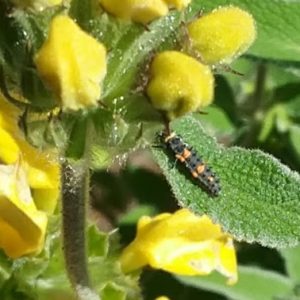

Ladybugs are handy critters to release into your garden in the spring, summer, and fall. They are beneficial in all stages of their life cycle. Each female can lay 10-50 eggs daily. Ladybug larvae live for three weeks before pupating and eat up to 400 aphids at a rate of 50-60 aphids a day in later stages. After 2-5 days adults emerge and continue to feed.
Plum and Cherry trees are producing succulent new growth now which aphids find irresistible. Keep a close eye on new foliage for signs of aphids. If you control them early, you will prevent significant damage.
Aphids suck the juice from new spring leaves, and the subsequent scarring can cause the leaves to warp and curl around the aphids, protecting them.
In addition to weakening the plant, aphids drop a messy, sugary residue on items below their work site and they are also prolific in their reproduction, making problems exponentially worse if left unchecked.
Each adult ladybug will consume over 5,000 aphids in their lifetime.
These beneficial insects are a valuable addition to the toolkit of every Valley gardener. Alden Lane Nursery can provide them in useful quantities and advise you on where and how to use them most effectively.
For those wishing another organic, or natural method of controlling aphids, we suggest a one-two punch, first with Bonide All Seasons Spray Oil followed up with a fresh release of Ladybugs a day or 2 later.
The spray oil simply sprays on at the end of a hose, no mixing. It smothers pests, rather than poisoning them. The Ladybugs mop up the leftovers and stand guard against local aphid uprisings.
Follow us in Social Media